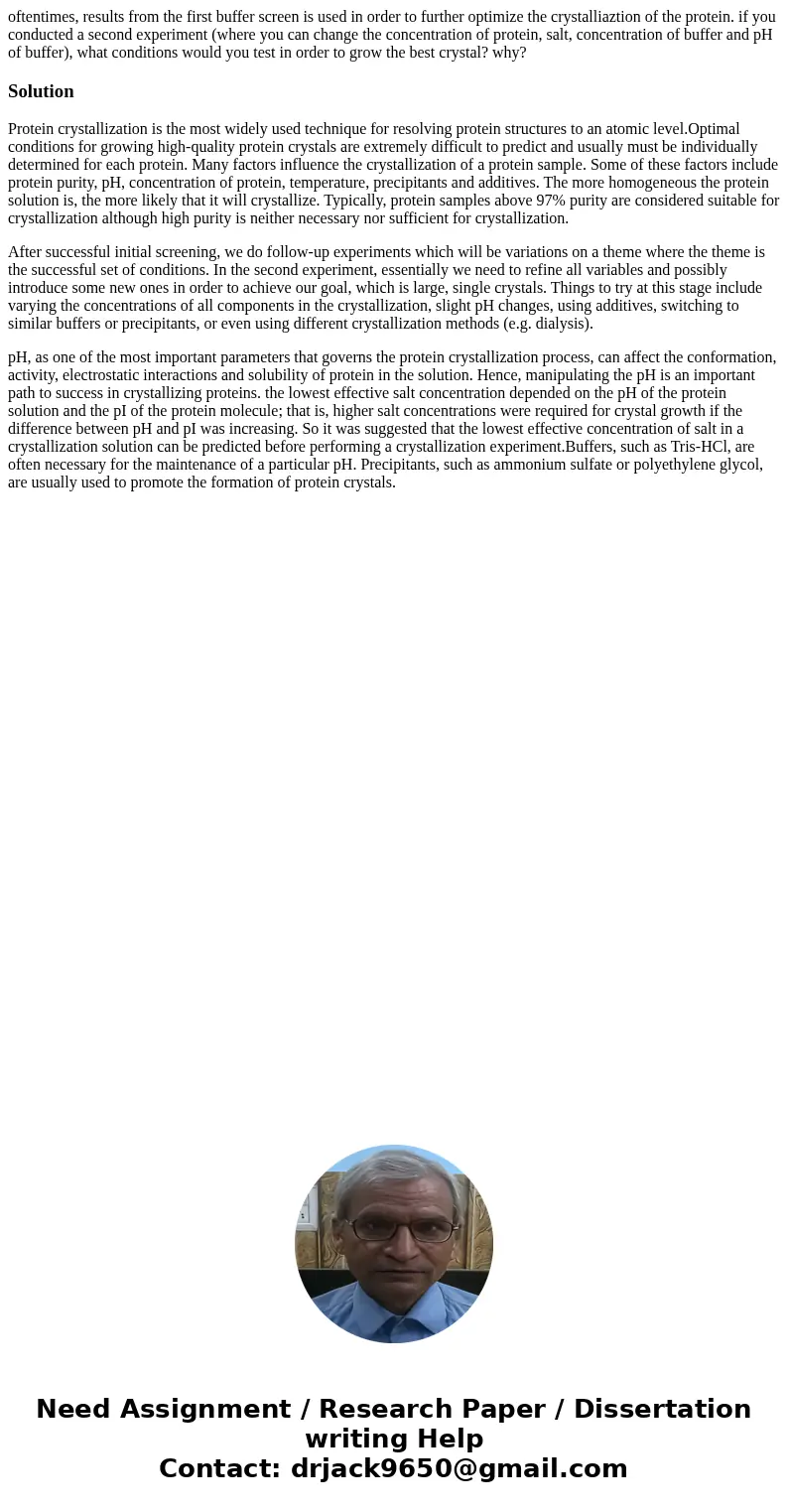oftentimes results from the first buffer screen is used in o
oftentimes, results from the first buffer screen is used in order to further optimize the crystalliaztion of the protein. if you conducted a second experiment (where you can change the concentration of protein, salt, concentration of buffer and pH of buffer), what conditions would you test in order to grow the best crystal? why?
Solution
Protein crystallization is the most widely used technique for resolving protein structures to an atomic level.Optimal conditions for growing high-quality protein crystals are extremely difficult to predict and usually must be individually determined for each protein. Many factors influence the crystallization of a protein sample. Some of these factors include protein purity, pH, concentration of protein, temperature, precipitants and additives. The more homogeneous the protein solution is, the more likely that it will crystallize. Typically, protein samples above 97% purity are considered suitable for crystallization although high purity is neither necessary nor sufficient for crystallization.
After successful initial screening, we do follow-up experiments which will be variations on a theme where the theme is the successful set of conditions. In the second experiment, essentially we need to refine all variables and possibly introduce some new ones in order to achieve our goal, which is large, single crystals. Things to try at this stage include varying the concentrations of all components in the crystallization, slight pH changes, using additives, switching to similar buffers or precipitants, or even using different crystallization methods (e.g. dialysis).
pH, as one of the most important parameters that governs the protein crystallization process, can affect the conformation, activity, electrostatic interactions and solubility of protein in the solution. Hence, manipulating the pH is an important path to success in crystallizing proteins. the lowest effective salt concentration depended on the pH of the protein solution and the pI of the protein molecule; that is, higher salt concentrations were required for crystal growth if the difference between pH and pI was increasing. So it was suggested that the lowest effective concentration of salt in a crystallization solution can be predicted before performing a crystallization experiment.Buffers, such as Tris-HCl, are often necessary for the maintenance of a particular pH. Precipitants, such as ammonium sulfate or polyethylene glycol, are usually used to promote the formation of protein crystals.

 Homework Sourse
Homework Sourse